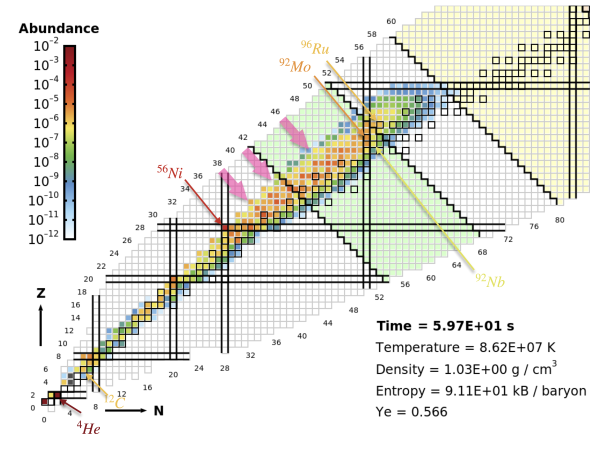Neutrinos

Neutrinos are unique among elementary particles. When created in the lab, they immediately escape, the vast majority of them to never be seen again. Yet, these elusive particles are everywhere. You are bombarded by neutrinos created by cosmic rays in the Earth’s atmosphere, and not only above you, but also below, on the other side of the globe. Tens of billions of neutrinos created by nuclear reactions in the solar core go through your thumbnail every second. Neutrinos dominate advanced stages of stellar evolution, especially for massive stars. Detection of neutrinos from supernova 1987A has confirmed the basic mechanism of the core-collapse supernova explosions: they are gravity-powered neutrino bombs. Over the last ten years, the IceCube neutrino observatory has detected ultra-high energy neutrinos from cataclysmic events at cosmological distances. Last but not least, the universe is filled with neutrinos from the Big Bang and their presence is unmistakable in the power spectra of the Cosmic Microwave Background and in the primordial abundance of helium.
From the particle physics point of view, neutrinos are also quite amazing. For one, they maximally violate parity symmetry: every time the neutrino spin was measured, it was found to point in the opposite direction to its momentum. More recently, careful studies of neutrinos showed that they change their flavor states just by propagating. An electron neutrino created in the core of the Sun arrives to us as a quantum superposition of the e, mu, and tau flavors. (This discovery earned the Nobel prize in 2015.) Whether there are additional neutrino states is a subject of intense current interest. Some theorists speculate that neutrinos could be a portal to another sector, with hidden interactions.
Over the last two decades, neutrino physics has witnessed remarkable progress, entering a precision era. Ongoing experiments at Fermilab are probing hints of additional neutrino states, or of new interactions in the neutrino sector. Experiments planned for the next ten years will look for subtle effects of charge-parity violation, which could be behind the origin of matter-antimatter asymmetry in our universe. The next generation of CMB experiments will probe the relic neutrino background with unprecedented precision. Detection of neutrinos from the next core-collapse supernova in our galaxy can unravel many enduring mysteries, from origins of many isotopes observed on Earth, to nuclear equation of state at extreme densities, to quantum dynamics in dense neutrino gases.
There are many theoretical questions that urgently need to be addressed. Our group has been involved in several of them, from supernova neutrinos and nucleosynthesis to the physics of neutrino-nucleus cross sections, to new physics in the neutrino sector and its astrophysical and cosmological signatures. New research projects are available for every taste, dealing with both neutrino properties and their astrophysical implications. Folks who enjoy mixing a lot of physics from traditionally separate fields are likely to find this area particularly rewarding.
Contact Alex Friedland (alexfr AT slac.stanford.edu) for further information.
